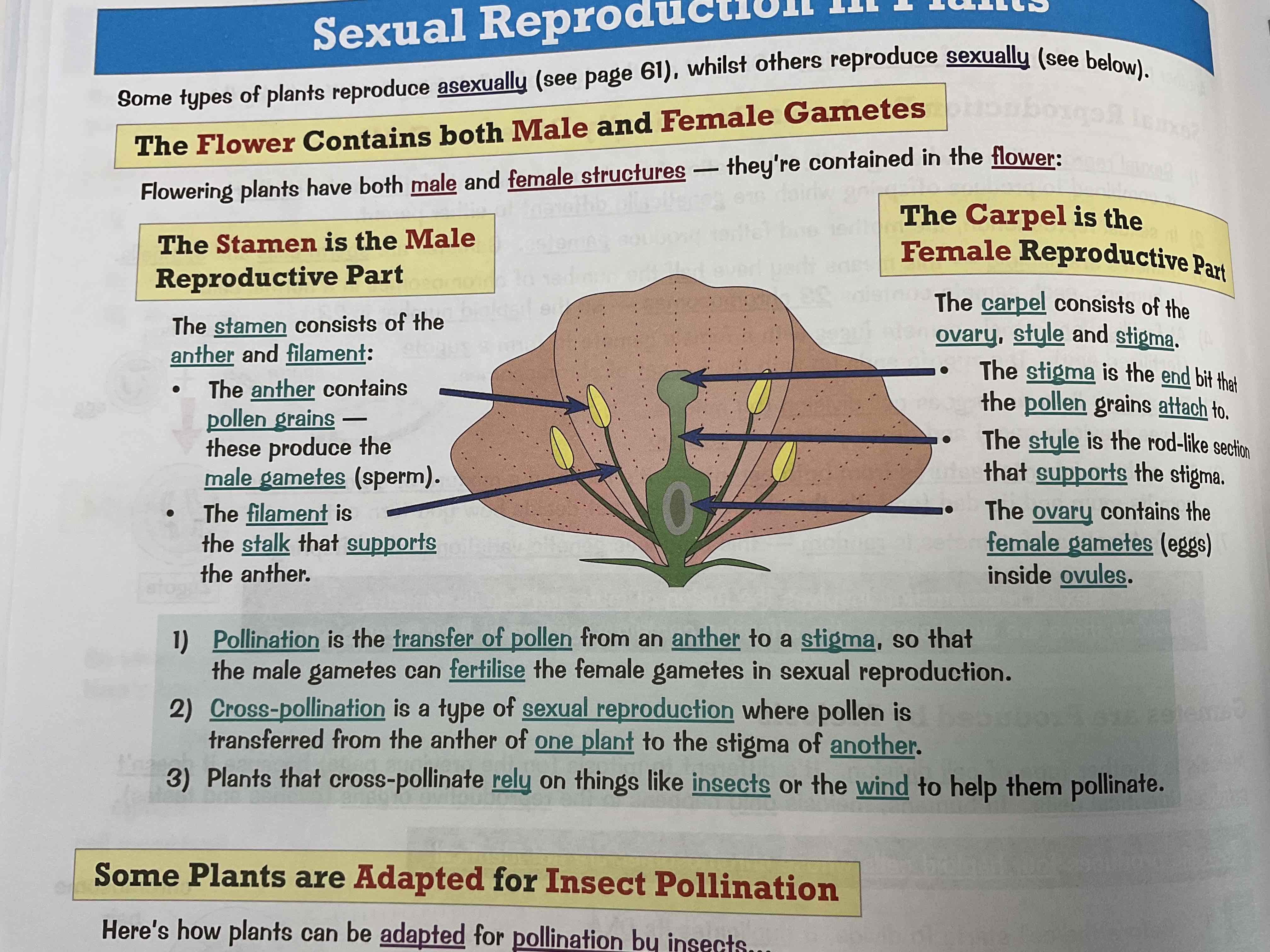Sexual Reproduction in Plants
1/8
There's no tags or description
Looks like no tags are added yet.
Name | Mastery | Learn | Test | Matching | Spaced |
|---|
No study sessions yet.
9 Terms
Do flowers have both gametes within them?
Yes - the flower contains both male and female gametes.
What is the male reproductive part?
The stamen

What does the stamen consist of?
Anther: contains pollen grains - these produce the male gametes (sperm)
Filament: is the stalk that supports the anther
What is the female reproductive part of the flower?
Carpel

What does the carpel consist of?
Stigma: the end where the pollen grains connect to
Style: rod-like section that supports the stigma
Ovary: contains the female gametes (eggs) inside ovules
What is cross-pollination and why do plants do it?
Cross-pollination is a type of sexual reproduction where pollen is transferred from the anther of one plant to the stigma of another.
Plants that cross-pollinate rely on things like insects or the wind to help them pollinate.
What sort of pollination are some plants adapted for?
Insect
Wind
How are plants adapted for wind pollination?
Small, dull petals on the flower (they don’t need to attract insects)
No nectaries or strong scents (for the same reason)
A lot of pollen grains - they’re small and light so that they can easily be carried by the wind
Long filaments that hang the anthers outside the flower, so that a lot pollen gets blown away by the wind
A large and feathery stigma to catch pollen as it’s carried past by the wind. The stigma often hangs outside the flower too.